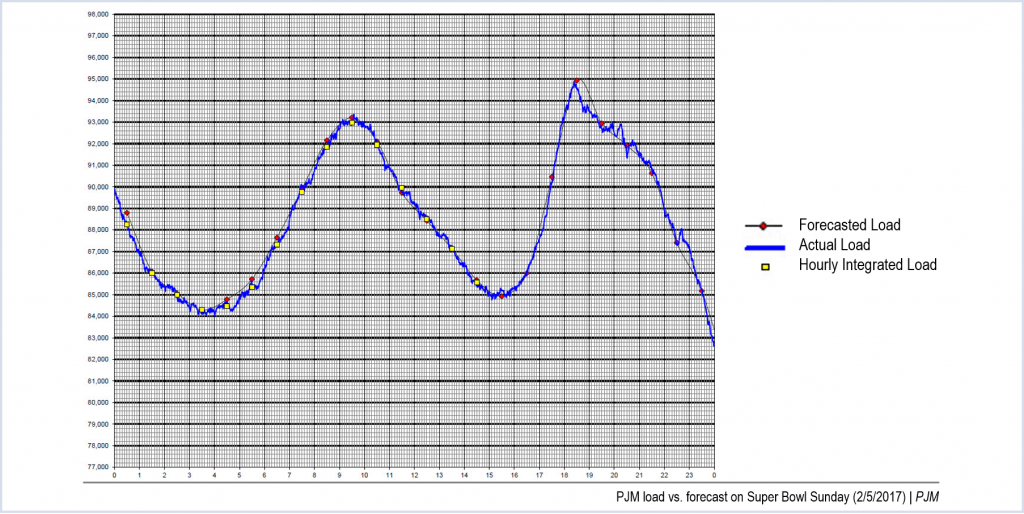By Rory D. Sweeney
VALLEY FORGE, Pa. — If you thought the ending of Sunday’s Super Bowl matchup was electrifying, you’re not alone. The event had a noticeable impact on electricity demand.
Just after the game started at about 6:30 p.m. on the East Coast, PJM’s demand dipped below the RTO’s forecast by about 1,000 MW, or about 1%, when everyone dropped everything to watch.
It recovered and then jumped above the forecast around 8 p.m., roughly corresponding with halftime, when everyone took a break to do other things, like cooking wings or microwaving some more queso dip. The load then followed the forecast until the game ended around 10:30 p.m., when it again exceeded the forecast as everyone went back to their normal routine.
The “Super Bowl dip” is a phenomenon that many RTOs experience. In fact, ISO-NE examined it in a post it published on its website last week. Part of the reason PJM could predict the load with fairly good accuracy is because the RTO factored the phenomenon into its forecast.
But that isn’t always the case. A similar event happened on Jan. 15, when the real-time load dropped about 2,000 MW, or roughly 2%, below the forecast around 6:30 p.m. ET, then jumped back up to the forecast around 8:30 p.m.
“It seems to have coincided with the end of the Green Bay [Packers]-Dallas [Cowboys] football game,” PJM’s Phil D’Antonio told the Operating Committee on Tuesday. “Apparently, that [playoff] game had enough attention that people were sitting in front of the TV. Then after the game, they went back to their normal lives.”
D’Antonio, a manager of reliability engineering at PJM, explained that the “load deviation” caused alerts within PJM’s control system. Ken Seiler, PJM’s senior director of system operations, noted later that it caused an eight-minute spin response of almost 703 MW.




